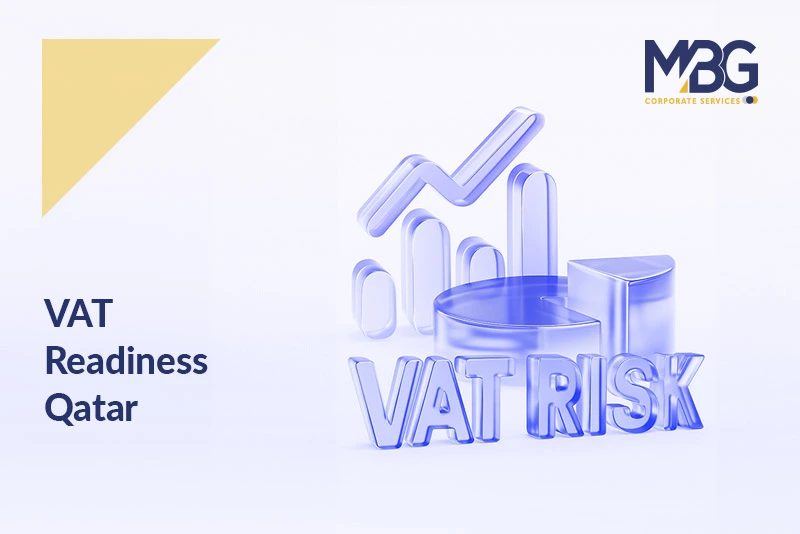VAT in Qatar: Step-by-Step Compliance Guide

This guide offers a comprehensive overview of Qatar’s Value Added Tax (VAT) framework, outlining the expected structure of the VAT law and its implementation. It also provides practical insights to help businesses prepare for VAT registration, calculation, filing, and maintaining overall compliance.
Current Status of VAT in Qatar
As of mid-2025, Qatar has not yet implemented Value Added Tax (VAT) or any form of sales tax. However, the country has signed the GCC VAT Framework Agreement and is actively progressing toward VAT implementation, with indications of a possible rollout in 2026. The standard VAT rate is expected to be 5%, as per GCC VAT Agreement.
With VAT implementation on the horizon, businesses should treat this phase as a crucial preparation period and an opportunity to strengthen systems, processes, and compliance frameworks rather than viewing VAT as a distant or theoretical development.
Legal and Legislative Framework
Qatar has taken significant steps to prepare for the future implementation of Value-Added Tax (VAT) through legislative and institutional readiness measures. This process began with Law No. 25 of 2018, which introduced indirect taxation via excise duties on select goods such as tobacco, sugary drinks, and energy drinks. While this law does not encompass all goods and services, its implementation demonstrates Qatar’s readiness to adopt a comprehensive VAT system. The excise framework serves as a clear path toward broader indirect tax adoption, providing businesses with an early model of registration, reporting, and compliance processes that will likely be expanded once VAT on goods and services is introduced.
The General Tax Authority (GTA) is expected to serve as the competent authority responsible for VAT administration, including registration, return filing, compliance monitoring, and audits, once VAT is introduced. The GTA has already built significant administrative capacity through the Dhareeba tax portal, which is anticipated to be extended to accommodate VAT compliance processes.
In preparation for implementation, Qatar is expected to release detailed executive regulations outlining key operational aspects such as tax rates, exemptions, filing procedures, and invoicing requirements. Additionally, the adoption of digital compliance mechanisms—such as e-invoicing and real-time reporting—is likely to be prioritized to ensure transparency, efficiency, and traceability of VAT transactions from inception. Businesses should begin preparing systems and processes to ensure smooth compliance once VAT is implemented.
Steps to VAT Compliance: What Businesses Should Do Now ?
Step 1: Impact Assessment and Readiness Roadmap
- Carry out a VAT impact assessment by analysing your distribution model, supply chain, contracts, pricing models and import/export flows.
- Determine which goods or services will be standard rated, zero-rated or exempt under the new regime.
- Map dependencies in your ERP or accounting systems, billing, purchasing, and invoicing flows.
- Commence change management implementation, such as staff training and stakeholder communications.
Step 2: Configure Systems and Processes for VAT
- Make sure your financial systems are capable of handling VAT calculation such as output tax, input tax, credit offsets
- Adjust your master data to indicate whether they are taxable, exempt, or zero-rated.
- Add or prepare for e-invoicing compliance modules that will likely be required alongside VAT.
- Consider workflow around VAT filing, supporting document retention, and auditability.
Step 3: VAT Registration
- Once the VAT law comes into effect, businesses that have taxable supplies above the registration threshold will need to register for VAT.
- Some businesses may choose to register voluntarily, even if below the threshold, to reclaim input tax.
- The registration union would likely be through the GTA portal, and they should expect to have their documents ready to submit. For example, licences, financial statements, and ownership information.
Step 4: VAT Calculation and Input Credit Mechanism
- Output VAT: This represents VAT that you collect on sales of taxable goods or services.
- Input VAT: This refers to VAT that you have paid on purchases of goods or services that you use to make taxable supplies.
- Net VAT liability = Output VAT – Input VAT. If this is a positive value, you can pay to the GTA; if it is a negative value, you can claim a refund.
- If goods or services are used for both taxable and exempt supplies, you may only get a proportional deduction on input VAT, if applicable.
Step 5: VAT Filing and Payment
- VAT returns will be filed at regular intervals. For example, monthly or quarterly.
- Returns must be submitted through the GTA portal within a given period after each tax period.
- Net VAT payments attached to returns or paid by a specified deadline must be paid.
- Late returns or payments may incur taxes/penalties, interest, or audits.
Step 6: Record Keeping and Compliance Monitoring
- Retention of tax invoices, credit notes, import documentation, contracts, financial ledgers, and supporting documentation must be kept for the legally mandated period.
- Stay apprised of circulars or guidance documents issued by the GTA in relation to the VAT rate, exemptions, changes in regulation, etc.
- Ongoing internal compliance can be monitored based on periodic reviews or VAT audits.






